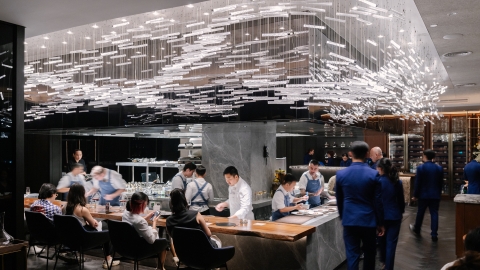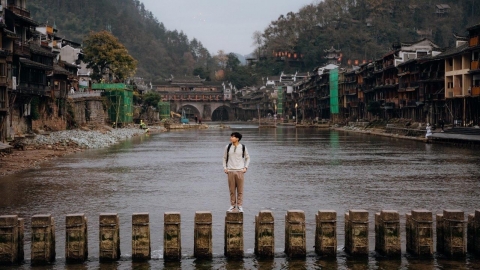Holi Festival: Explosive colors welcome Indian spring
March is the perfect time for visitors to immerse themselves in the vibrant and colorful Holi Festival in India. This is considered one of the wildest spring festivals on the planet, bringing an unforgettable experience to those brave enough to join the "battle" of brilliant colored powder. Holi Festival usually takes place on March 8 every year.
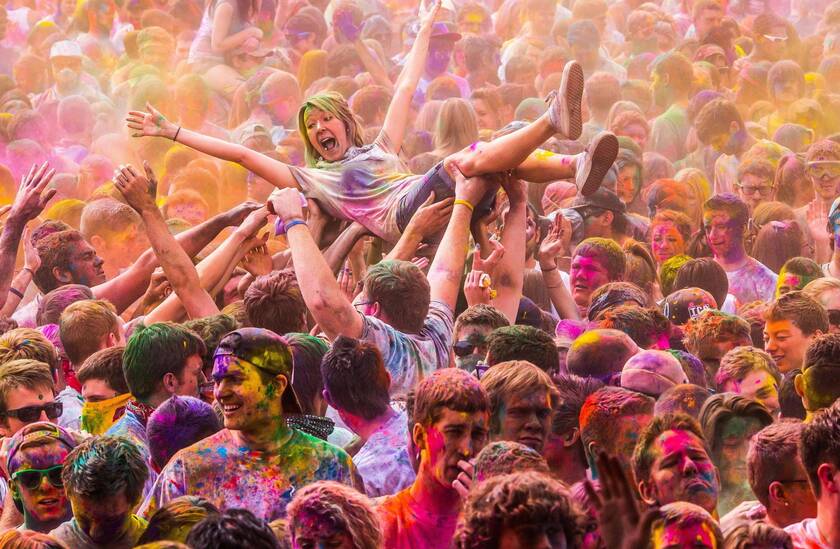
The festival takes place on the full moon day of the Hindu month of Phalgun (usually February or March).
Instead of dressing up in your best clothes, get ready to join the crowds dancing wildly in the streets. People will throw colorful powders at each other to wish each other good luck, welcome spring and the victory of good over evil.
All the colors used during the festival have their own meanings in Indian culture. Green symbolizes purity, red symbolizes renewal, and orange symbolizes happiness and fulfillment. When these three colors are combined in Holi, they all have positive and good meanings.
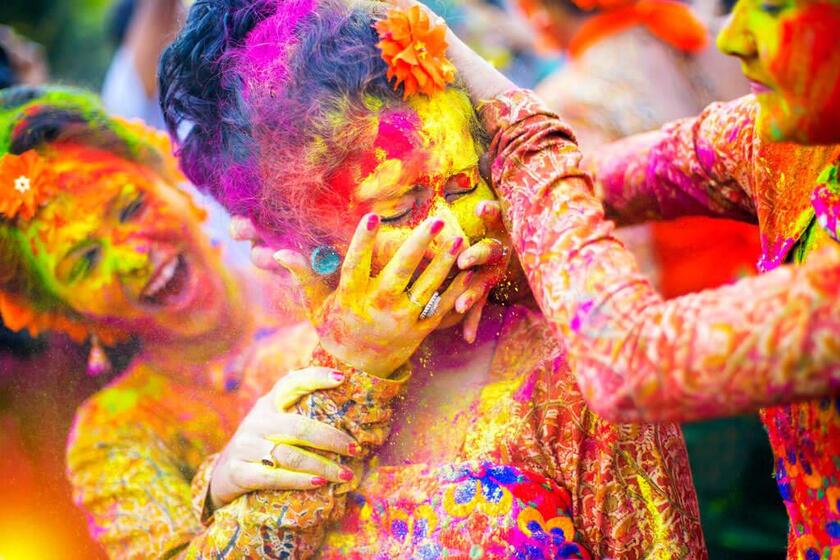
The appearance of this colorful festival also marks the end of winter and the beginning of a vibrant spring.
However, visitors should note a few important points. Some of the artificial dyes used in the festival can cause skin or respiratory irritation. Therefore, people with skin or respiratory problems should be careful when participating.
Songkran: The bustling water festival welcomes the Thai New Year
Songkran, the Thai New Year festival, has long been known as the world's largest "water fight". The festival originated from the tradition of pouring water on each other as a blessing for the new year. Buddha statues are brought out in processions to welcome the new year and then washed by devotees to gain merit. Songkran is held from April 13 to 15 every year.

During this festival, people splash water on each other and the elderly to show respect and wish each other good things.
However, nowadays, Songkran has turned into a large-scale water fight. People use buckets, water guns, and even water cannons to splash water on each other. Tourists coming to Thailand during this time will certainly not be able to avoid getting soaked.
Songkran is a colorful and exciting festival that attracts visitors from all over the world. However, if you don't like getting wet or want to protect your luggage, consider staying away from the main streets during the festival.
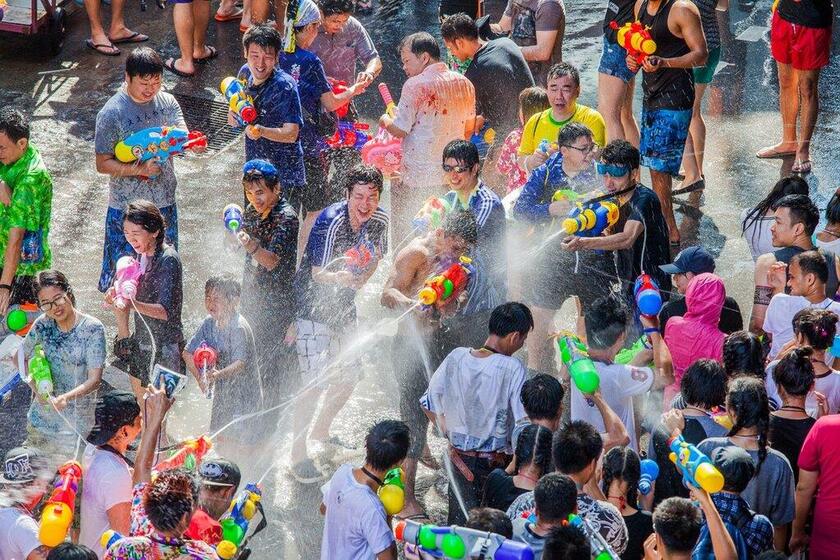
Songkran is a highlight of Thai tourism.
Hanami: Cherry Blossom Festival - The Quintessence of Japanese Culture
Spring in Japan is always awaited by tourists because this is the time of the Hanami Festival - the cherry blossom festival. Hanami is a unique traditional beauty, expressing the cultural quintessence and love of nature of the Japanese people. The Hanami Festival (花見) or cherry blossom festival does not have a fixed date but depends on the time when cherry blossoms bloom in each locality.
Cherry blossoms (sakura) bloom from mid-March to May, depending on the region and climate. Their fragile, brilliant beauty adds a radiant touch to the Japanese spring picture.

Japan has more than 50 different varieties of cherry blossoms. In the blooming season, the pink, white and red flowers compete to show off their brilliant colors across the sky, creating an extremely romantic scene.
Hanami is a festival where Japanese people gather together and picnic under the cherry blossoms. Parks and gardens become bustling with fun activities, enjoying food and viewing flowers. Many offices also organize picnics and parties for employees in the park to strengthen the team spirit.
Cherry blossoms have a short lifespan, blooming for only about 1-2 weeks. Therefore, Japanese people consider cherry blossoms as a symbol of short, fragile life. Watching cherry blossoms bloom is also a way for them to cherish every present moment and reflect on life.

Have a picnic under the cherry trees.
Hanami festivals often coincide with Golden Week, Japan's biggest holiday. This is therefore a peak tourist season, attracting visitors from all over the world. The large number of visitors can lead to traffic congestion and crowding at popular flower viewing spots.
Thailand Kite Festival: A Sky of Colors
March is the time when visitors can immerse themselves in the bustling and colorful atmosphere of the Thai Kite Festival. The festival is held to preserve the long-standing kite-flying tradition of the local people, and at the same time attracts visitors from all over the world.
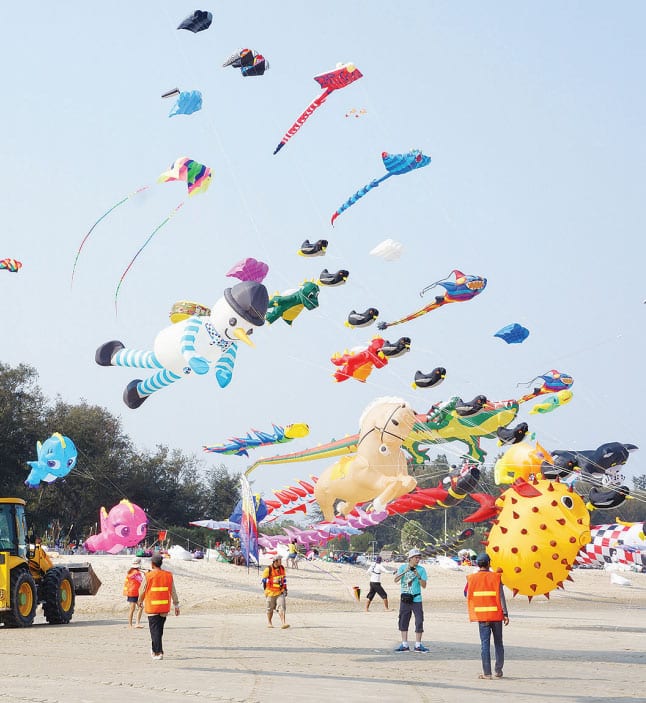
The idea of the kite festival comes from the fact that every March there is a hot wind blowing in Thailand.
During March and April, the sky of Thailand is ablaze with colorful kites of all shapes and sizes. Kite artists will showcase their skills, creating impressive performances. Visitors can also participate in kite flying activities, immersing themselves in the joyful and vibrant atmosphere of the festival.
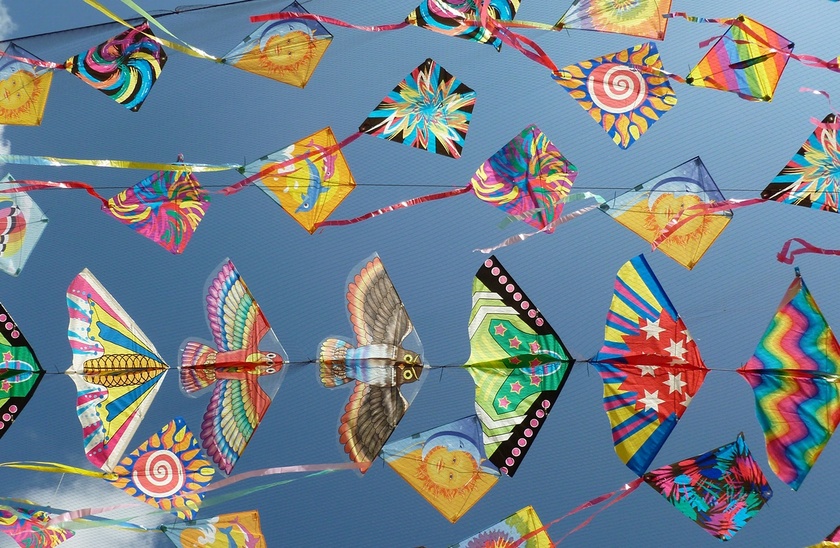
The festival always attracts many tourists from all over the world, especially those who have been interested in flying kites since childhood.
The Kite Festival is not only a simple entertainment activity, but also a place to preserve traditional cultural values of Thailand. This is an opportunity for local people to show their pride in their cultural heritage, and at the same time introduce this unique beauty to international tourists.



























